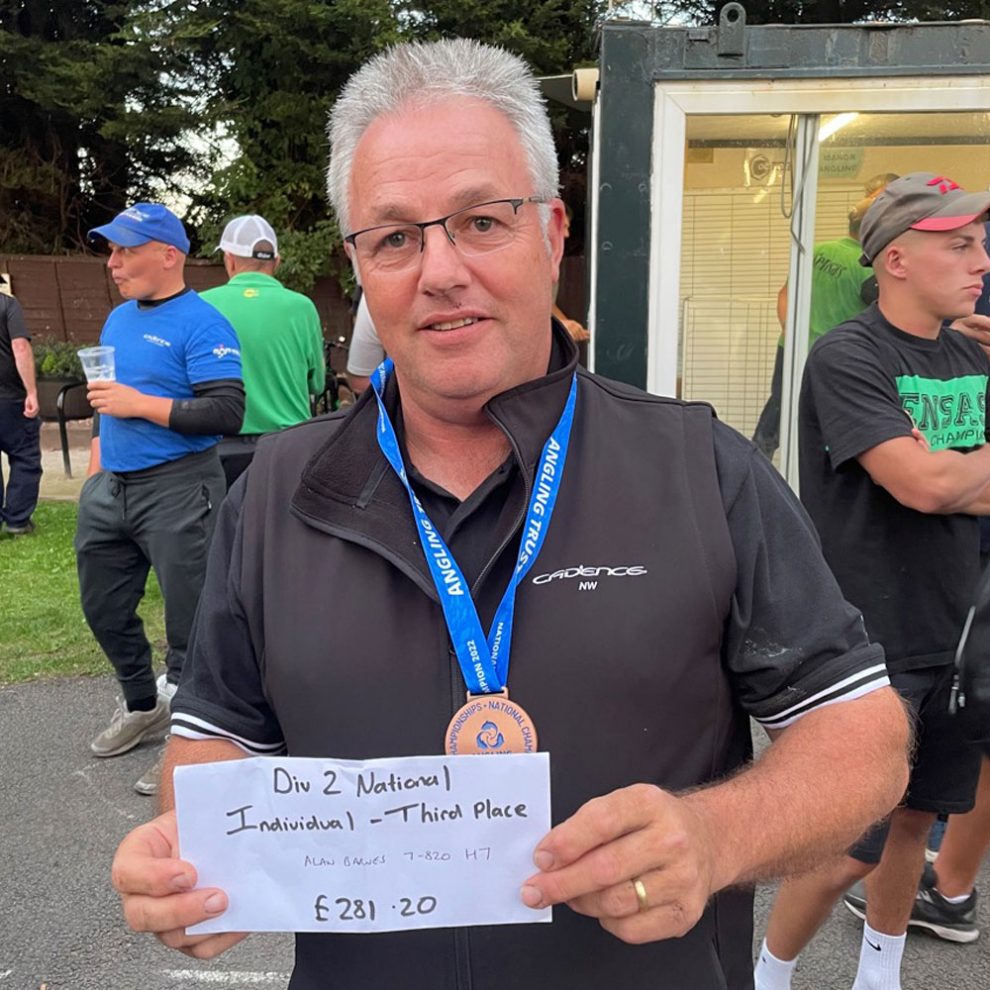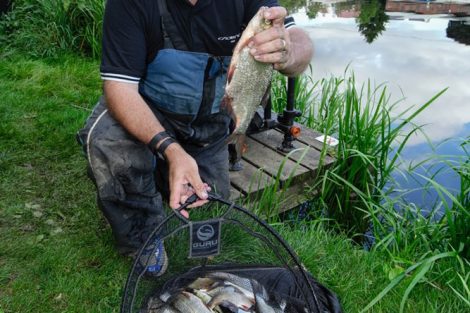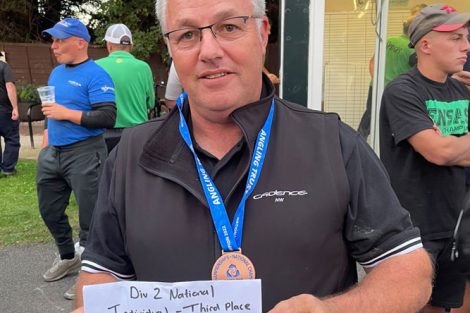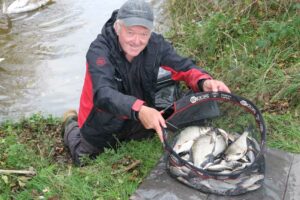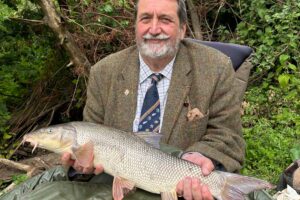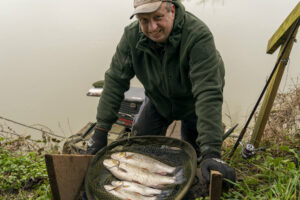Cadence 11ft No 1 Feeder Rod and CS5 Are Vital Tools In ambassador Alan Barnes’ National Medal Success
Cadence Fishing UK ambassador Alan Barnes put two of his favourite products from the tackle manufacturer’s stable to good use as he earned third overall individual position on the Angling Trust Division Two National with a super 17lb catch of skimmers and hybrids.
Even more importantly, the match, fished on Saturday, September 10th on the Warwickshire Avon, also saw his team, Cadence North West, gain promotion to Division One at their first attempt, finishing a deserved fifth overall in the team standings – an agonising 10 points short of winning the team competition outright.
Magazine publisher Alan, from Preston, Lancashire, drew H section – split between 14 pegs at Common Road in Evesham, and a further 19 pegs a mile downstream on the famous Town waters where the Evesham Angling Festival is staged each August Bank Holiday weekend.
Up on Common Road, the Cadence North West captain drew peg H7, which is permanent peg 12 on the Evesham & District Angling Association water, opposite the mouth of a marina and a noted bream area. It was an area he was luckily familiar with, as he had practised there a matter of seven weeks earlier with Cadence Superteam friend Leigh Gardner, when he caught a 12lb bag of skimmers and pommies.
Looking back on the big day, Alan explained: “A week before the Division Two match, the peg immediately upstream of where I drew on National day, permanent peg 11, had produced the individual winning weight on the Angling Trust individual national for Cadence Superteam star Andy Bruton, so we knew the bream were in residence and feeding.
“The day before the National, I also purposely drove down to Evesham from Preston to arrive early afternoon to give myself time to go and walk Common Road and the Town waters to see the state of the river. There had been quite a bit of rain during the week but, because we had endured drought conditions all summer, the ground took most of the rainwater, just putting a few centimetres on the level. It was also gin clear, which isn’t what you want when targeting bream. When I walked at Common Road, I saw no signs of any fish, but I just prayed that our drawbag specialist, Graham Kennerley, would pull out a good peg for me.”
When the draw was made and Graham pulled out H7 for Alan, he knew it could be a special day and, arriving at his peg, Alan could see decent bream rolling regularly in front of the peg to his left, but, worryingly, no signs of activity in his own swim.
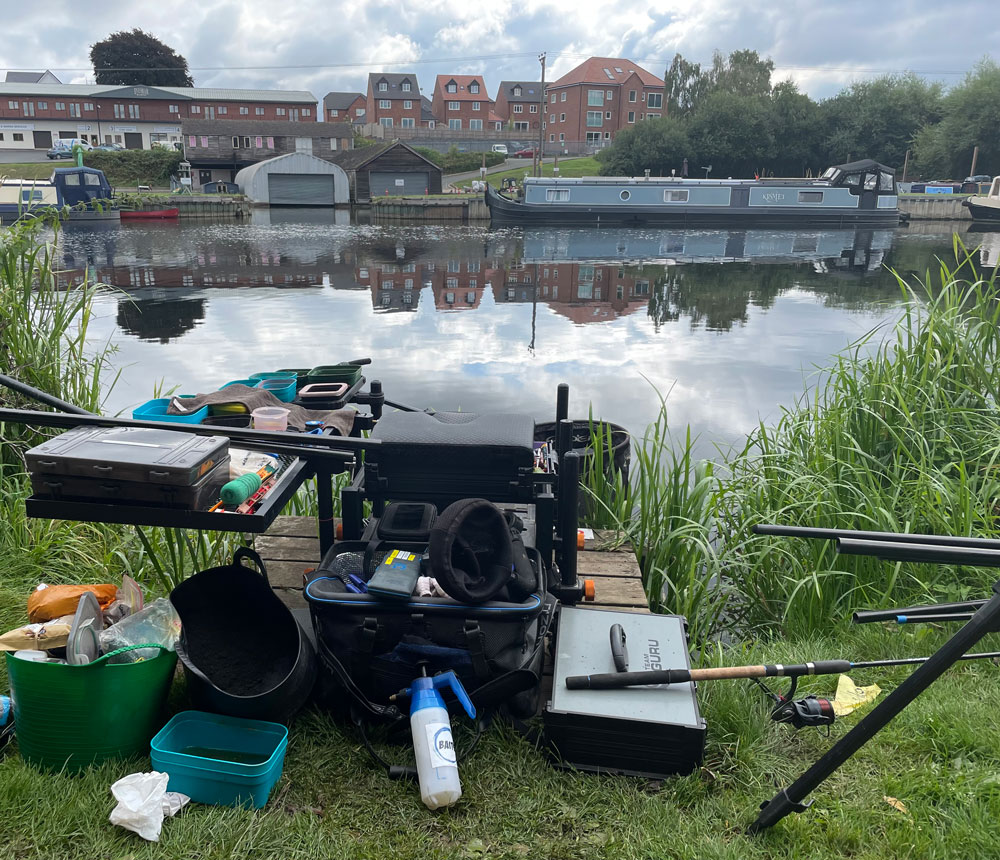
“With team points being the name of the game on a National, I knew I had to cover all the bases so I set up a perch rig on a top four pole kit, a hemp rig to fish at 14.5 metres, plus a two-gramme Sensas Laetitia for easing a bulk rig with maggots or pinkie hookbaits over hard groundbait put in at 13 metres. It is very deep at Common Road and at 13 metres I was in at least 10-12 feet of water.”
Once those ‘back up’ pole rigs were set up and put aside, Alan reached into his rod bag for his trusty Cadence CR10 11ft No 1 feeder rod, teamed with a Cadence CS5 4000 sized reel, loaded with 3lb Maxima. A three-quarter-ounce test curve carbon tip was fitted and the starting feeder rig was a free-running paternoster, finished with a three-foot-long tail of .12mm line to a medium wire size 18 hook, baited with two dead red maggots.
Groundbait-wise, Alan used a 70/30 mix of MPW Angling Products’ SkimmStim and MPW Magic All-Round, mixed to a fluffy, slightly damp consistency, just binding enough to get a feeder payload of chopped dendrabenas, casters and dead pinkies and dead maggots down to the deck a good 45 yards across the river.
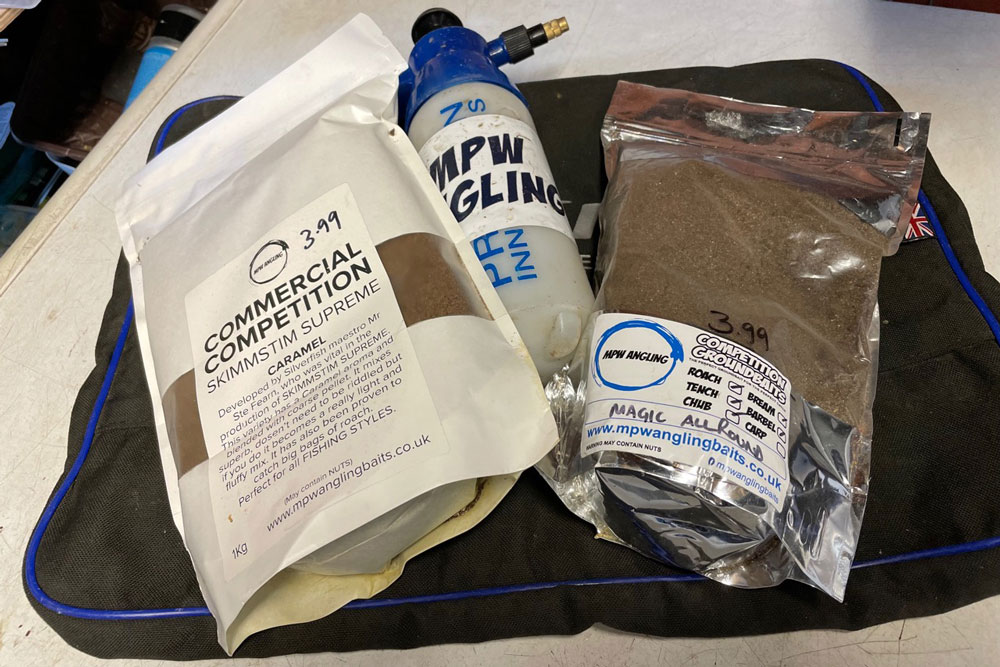
Things kicked off very slowly and after an hour Alan only had three perch to show for his efforts while Gloucestershire-based angler Greg Wood, on H6, effortlessly put an estimated 6-8lb of skimmers and bream to 2lb in the net in the first 60 minutes.
“If I am honest with you, I was very concerned at this point,” said Alan.
“All sorts of thoughts were running through my head. I imagined I’d be about last in section with those three perch, which probably didn’t quite weigh six ounces between them. But I knew I had to be patient and try to make something happen.
“Towards the end of the first hour I started to come back with chewed maggots, despite frustratingly not having seen any movements or indications on the quivertip. I thought about it for a few moments, realising the bites were coming on the drop and the maggots were being done before all the line from feeder to quivertip had sunk.
“I gave it some thought and decided to change the feeder set-up, so I bit off the feeder rig and got a twizzled semi-bolt rig out of my bag. I keep these on foam spools, as we do a lot of fishing on the River Weaver back home in the North West and we have learnt loads from Weaver legends like Rod Fraser, Ian Belfield and Lewis Breeze these past 12 months on there. My team-mate, Ian Henry, has also been a great help in this respect. Having rigs pre-made and stored in this way, taking a leaf out of sea anglers’ books about ready-rigs, is priceless in terms of saving precious time in matches.”
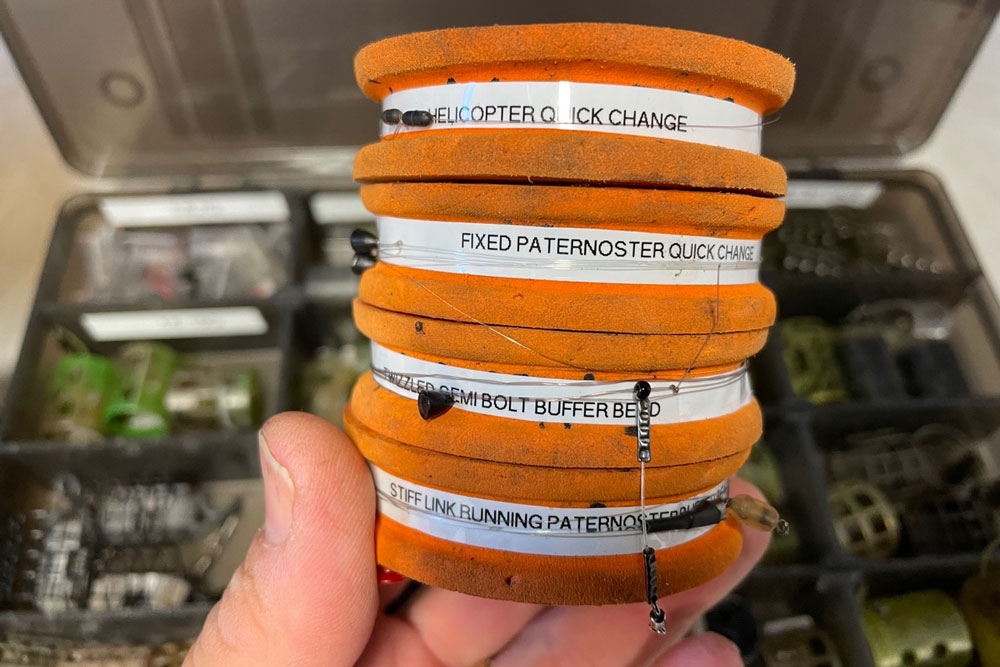
As well as a change of feeder set-up, Alan shortened the tail down to 18 inches and, most critically in his opinion, swapped from the original medium wire hook to a finer wire pattern.
“My thinking was that these fish have quite hard mouths, being river fish, so a finer hook was required to connect with them at distance. The finer wire also meant a slower fall through the water and I started using floating red maggots on the hook to help slow the hookbait’s fall down even more, buying time to see the bites as they always came within 10 seconds of the feeder hitting the surface.”
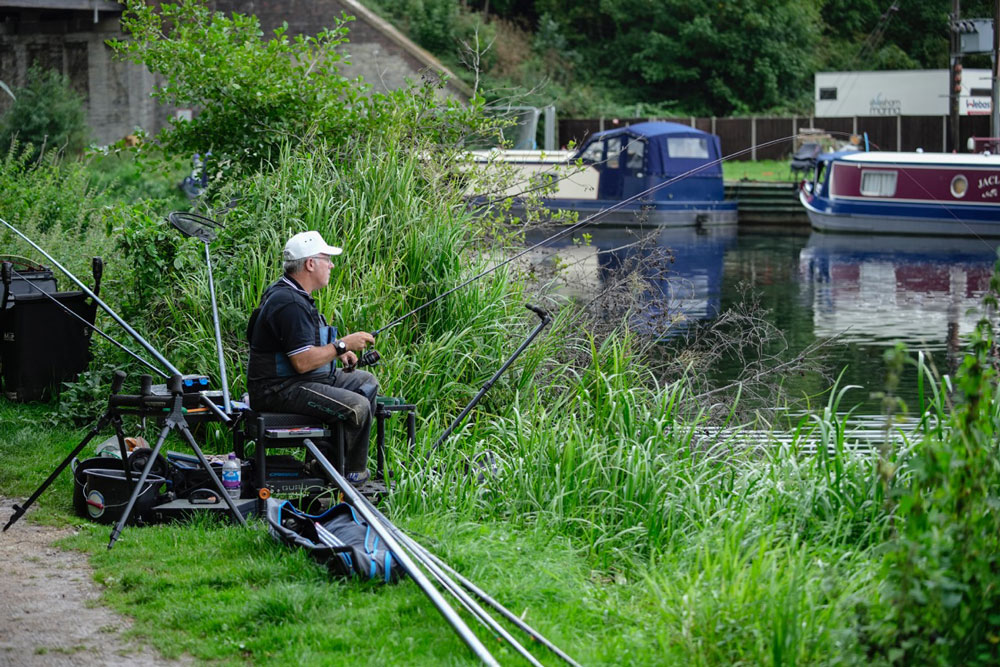
Another thing Alan decided to change was the position of the rod from across his knee and slightly upstream, pointing down to the water, to repositioning it pointing 30 degrees skywards and downstream at a position of one o’clock.
“Looking across the river, on the far bank was a four-storey block of yuppie apartments bang in line with where my rod was now positioned,” he explained. “And I could use one of the windows as a virtual ‘target board’ because even with this more refined set-up and the semi-bolt rig, bites were still only tiny pulls and rattles and were murder to hit.”
The patient approach paid off and slowly but surely bites started to come. In the second hour Alan netted 14 skimmers, 16 in the third hour and in hour four had a run of bigger hybrids going up to 1lb 8oz as the peg got stronger and stronger.
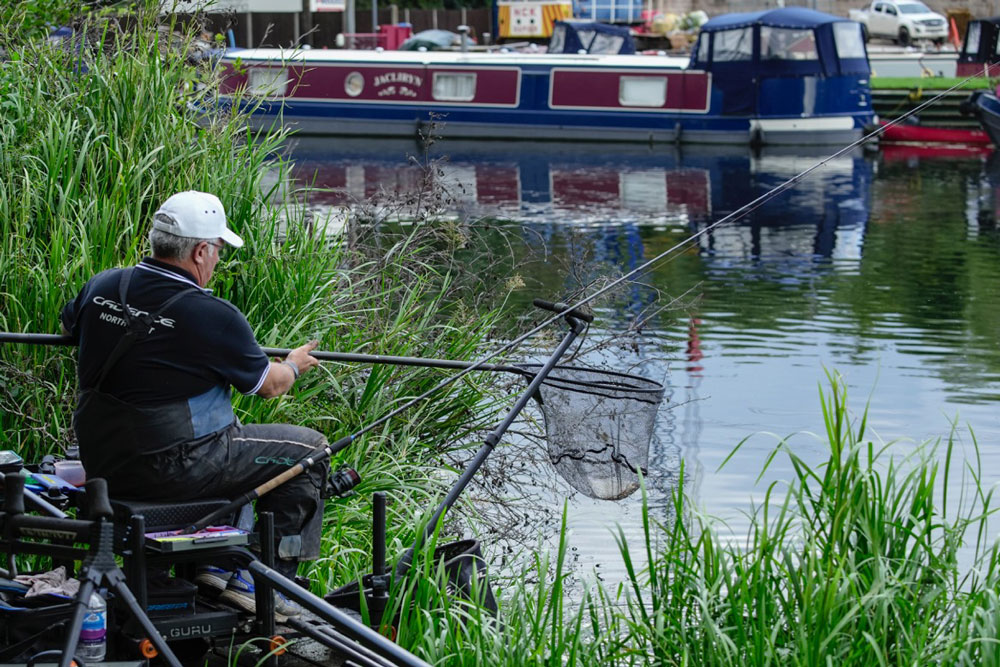
Looking back on how the day unfolded, Alan said: “There is no doubt in my mind that having the conviction to start again with a new feeder rig after an hour triggered the changes that brought the bites and the fish in the net. They were there, it was just hard to see and read the bites.
“The big angling lesson to remember from my experience last week is to not be afraid to change something in your set-up. I read England and Dorking man Steve Gardner’s autobiography, ‘A Life In Match Fishing’ and the biggest lesson I learned from reading it was a phrase he uses, ‘Just Do It’. What he means is that if you think of something to improve your catch rate, change it, do it. Don’t sit there thinking ‘I’ll try that in a few minutes’ because you seldom do. I’m just so glad that I got off my backside and made the changes needed.”
Talking about the Cadence CR10 11ft Feeder No 1 rod, Alan said: “I’ve owned the 11ft No. 1 rod for three years now. When James Robbins handed it to me, he said it was ‘a bit special’ and he wasn’t wrong at all.
“It is a fantastic blank, designed by James in conjunction with Yorkshire bream legends Steve Whitfield and Wayne Bartholomew. It is the closest thing I’ve used to the old Carbotec 11ft feeder rod, and, as far as I’m concerned, that was the daddy of all skimmer rods. They have not been made for many years now, 20-plus years – and command a hefty second-hand price tag. But with the Cadence CR10 11ft Feeder No 1 you can have the same action for a lot less money. A new CR10 11 ft No.1 will cost £129.99, even less at a Cadence roadshow with a bit of discount. That cheap price-tag might just buy you the butt section of a second-hand Carbotec.”
And talking about the reel, Alan added: “The CS5 4000 reel is also a great, economical piece of kit with powerful gears – in short a proper workhorse that will not put a massive hole in your bank balance, selling for £59.99.”
Baitwise, Alan fed a pint and a half of casters through a small feeder, meaning a busy four hours once he had sussed out the way to catch the skimmers. He said: “I fed about four to five pints of groundbait through the feeder in five hours and by the end of the match the fish were blowing like crazy in the peg.”
Looking back on a special day, he added: “The Nationals still mean a lot to many, many match anglers. As a youngster in the 1970s, every Saturday I’d go down to Preston outdoor market to help my Mum and my Gran pack up their fabric stall, and my Gran would give me a quid to buy the Angling Times and Anglers Mail every week, God bless her.
“I’d read all about the National feats of people like Clive Smith, Ken Giles, Ivan Marks, the Barnsley Blacks, Percy Anderson and my ultimate match fishing hero, Dave Roper and his Izaak Walton team.
“My imagination was always fired up by these characters and their amazing achievements. Pictures of Percy Anderson with his huge Cuban cigar and a 40lb winning bag of Welland bream in 1974 are seared into my memory. Images splashed across the news pages of unbelievable crowds lining the banks of the Witham watching Ivan Marks. Wow! In those days the nationals were massive, with 80 or more 12-man teams. Great times.
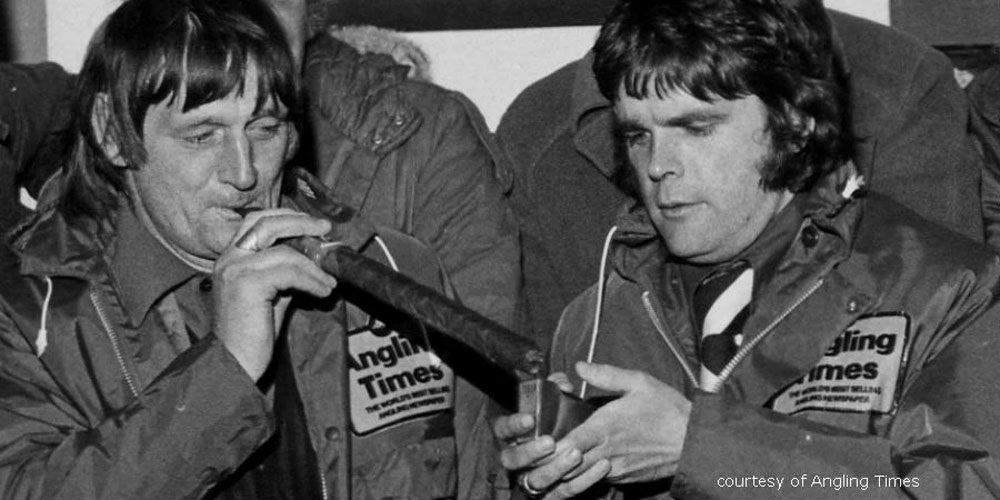
Percy Anderson has his cigar lit for him by Angling Times editor Bob Feetham after his 40lb bream catch on the River Welland in 1974.
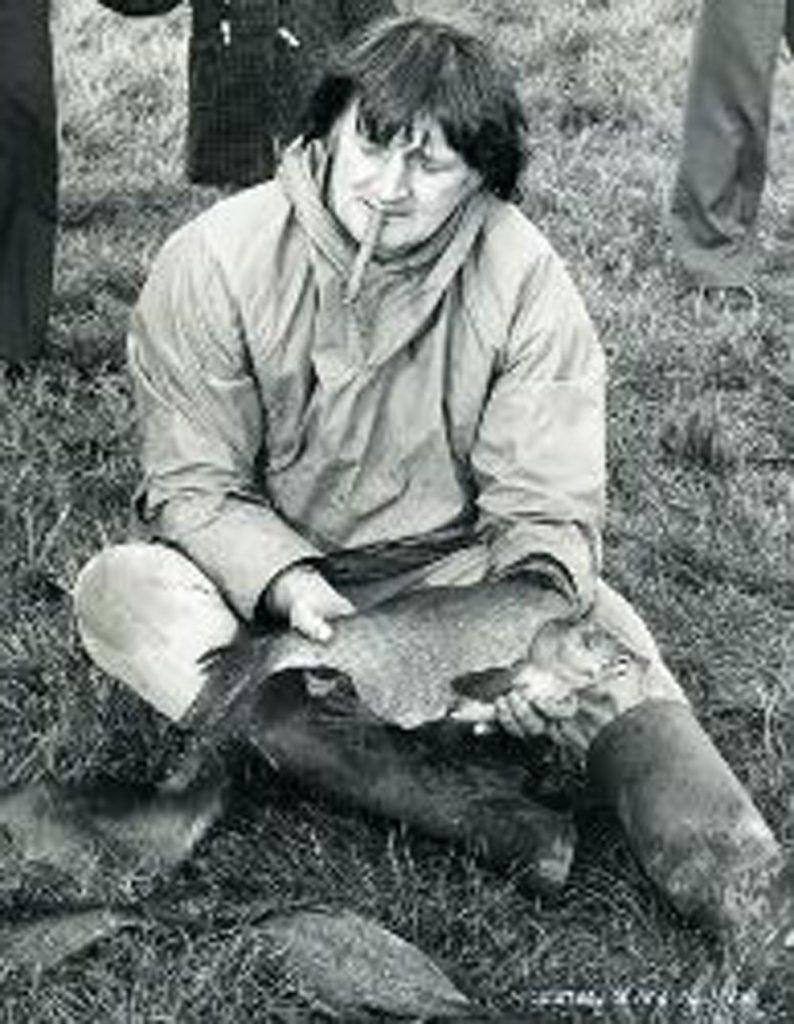
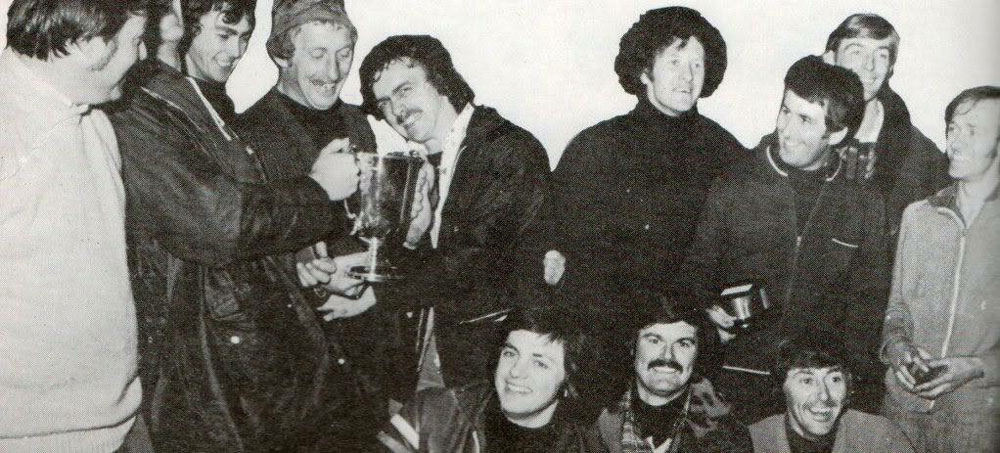
“But on a National you never think it is going to happen to you individually. I’ve had the heartbreak of blanking on a Division One national on the Witham with my home-town team, Izaak Walton. I was one of 59 blanks in my section that day. A killer blow that made you feel like crying. Getting off the coach back at HQ and having to tell your skipper you have dry-netted is one of the hardest things in the world to do, believe me.
“You need masses of luck to draw a good peg and then you need even more luck and a calm disposition to do a peg justice.
“So, to personally win an individual medal and to see our newly-formed team, Cadence North West, make it straight up to Division One at the first attempt in a fantastic fifth overall position is just an amazing feeling.
“We are all buzzing and cannot wait for next year’s Division One event on the Gloucester Canal. Thank you Warwickshire Avon, thank you Cadence, and thank you Graham Kennerley for drawing me a proper peg.”

